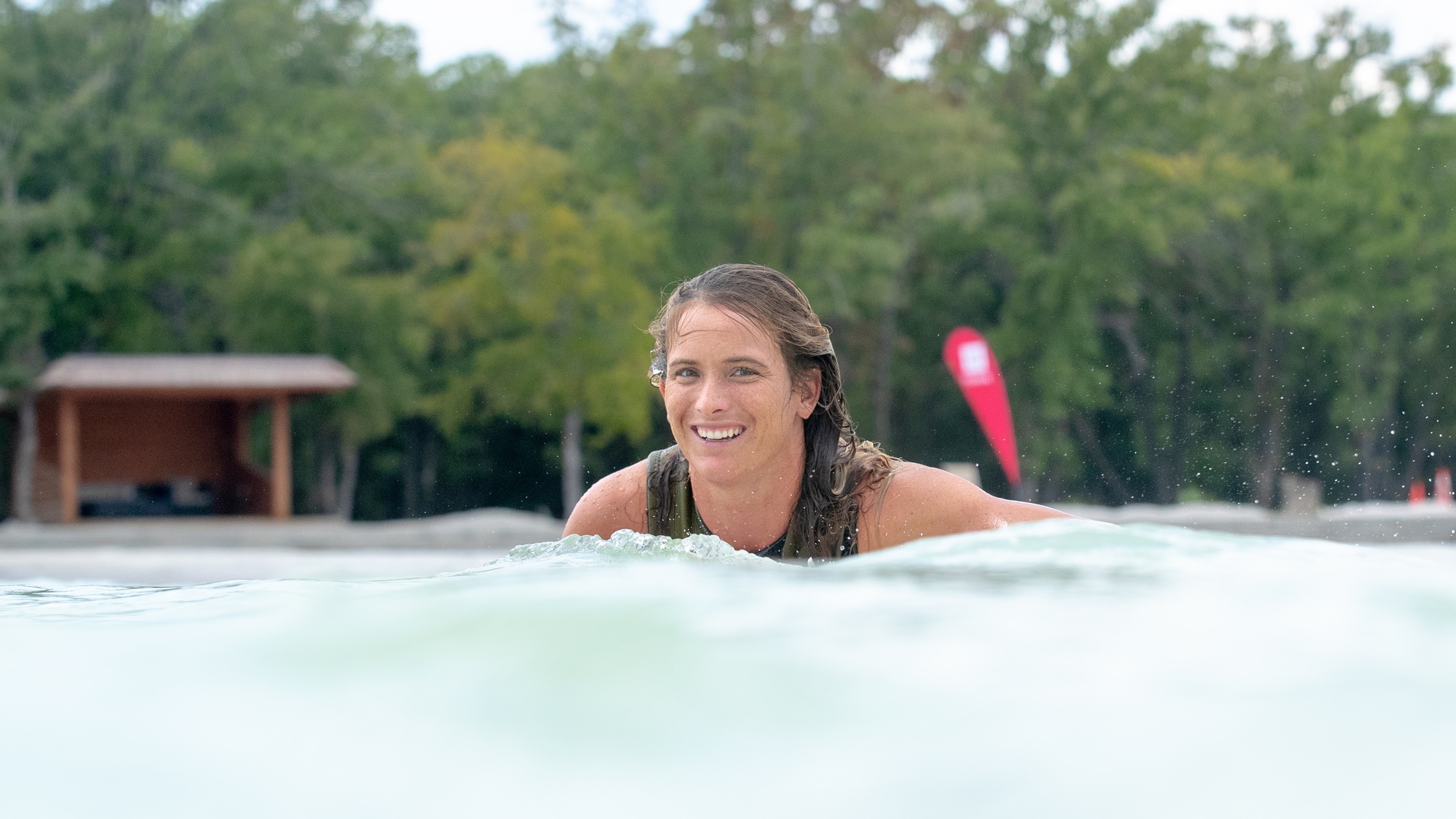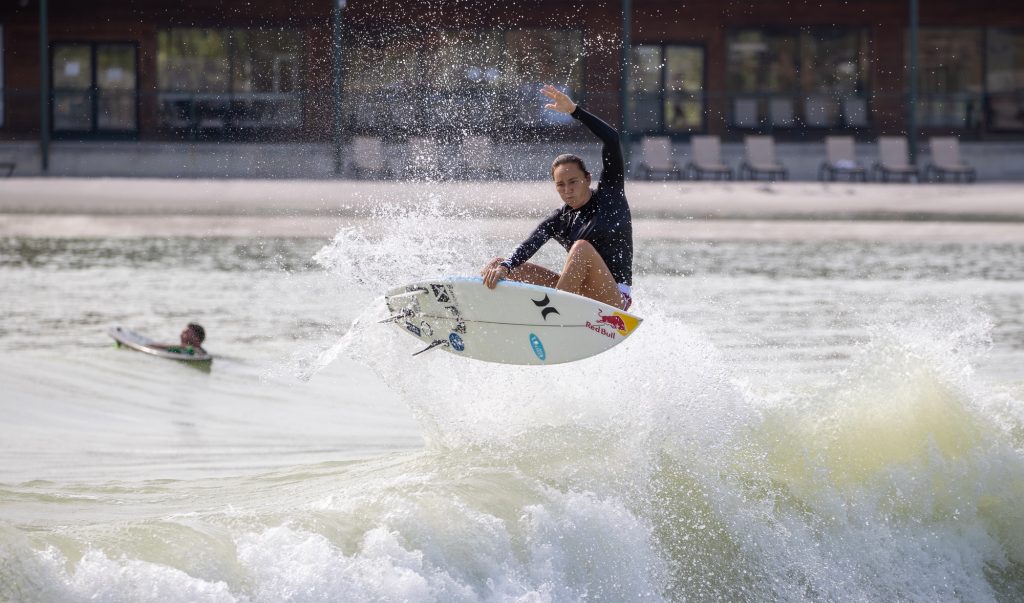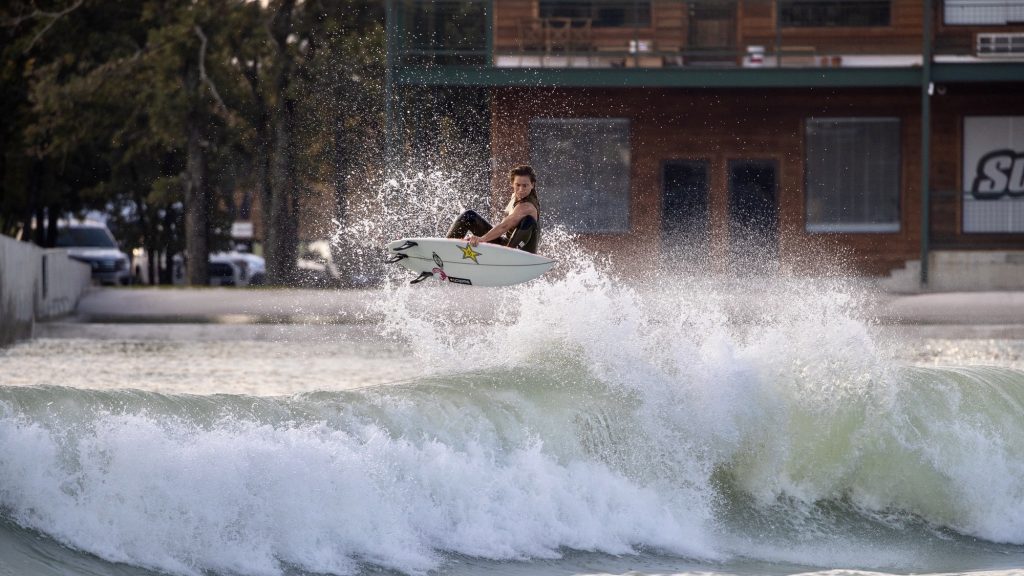USA, Australia and pretty much the rest of the world smitten with Olympic wave pool training

Late last year at Urbnsurf in Melbourne the Australian National team went in under wraps for some training. “We’re stoked to help more Australian surfers achieve their dreams of qualifying for the World Tour, winning world titles, and earning Olympic gold,” Urbnsurf said in a social media post.
But Australia’s Uber-competitive streak is not unique when it comes to training and wave pools. China built the giant Xing Feng Extreme Sports Center, a foil design closely resembling Wavegarden and Kelly’s plow, to train their team. South Korea, Spain, England, Wales, all have wave pools to train athletes.
Last month Team USA hit BSR Surf Ranch in Waco Texas in preparation for the Olympics. But their well-publicized foray into the heart of Texas isn’t new.
“Back in 1999, Typhoon Lagoon was one of the few wave parks in the world with a truly surf-able wave,” says former USA team member Sunshine Makarow. She noted that while the contained environment and repetition worked well in theory, the reality of a nineties wave didn’t’ fit well with hardcore training.
“There were about 15 of us, and all in the same rotation so as it worked out we each got about 5-6 waves, and the first few waves we were just trying to figure out when to start paddling, and how to ride it. the A-frame had a nice take-off, but fizzled out quickly.”
Sunshine said she saw the potential of wave pool training while in Orlando, but added that the team didn’t spend enough hours in the pool to up their competitive game.
Twenty years later and USA Surfing athletes Carissa Moore, Lakey Peterson and Courtney Conlogue landed in Texas for a special camp in preparation of the 2021 Olympic surfing venue in Japan.
Surfing’s first Olympic Games will be held at Tsurigasaki Beach in Chiba — about 40 minutes outside Tokyo. The area isn’t known for great surf, so competitors will have to work to stand out from the competition. Repeatedly doing the same maneuver in a wave pool, can give a surfer the edge they need in an Olympic heat.

“I think airs will be a big factor at the Olympics,” said team coach Brett Simpson. “There will be a lot of one-maneuver waves and if you can turn a 4 into a 7 that will be the difference between making a lot of heats and maybe even winning a gold medal.”
Most of the surfers on the US Olympic team have a deep well of tricks to pull out the score. But judges will also look at how smoothly surfers transition out of their big moves. Simpson says the wave pool practice focused a lot on mastering moves rather than just completion. He noted that a haphazard layback into the whitewater to recover will eat away at a score. Something the Yanks say they want to avoid.
“Getting the repetition every two minutes is the biggest part of why we’re here (BSR). Getting that body control and technical side of where to put your head and where to put your shoulders and staying over your board,” added Simpson.
Carissa Moore and team were two days deep at BSR to work on technique and team camaraderie when the 4-time world champ noted that aerial progression is happening very quickly.

“Witnessing what they (the younger surfers) are doing in wave pools, the aerials they’re doing, I was definitely not doing at their age and I’m barely doing now at 28,” said Moore.
In addition to wave pool training sessions, the athletes worked with a panel of Olympic medalists, athletes and coaches from other sports. To top off the basic athletic help, the team consulted experts in the fields of sports psychology, nutrition, training, movement analysis and rehabilitation. They also dove into the relatively new study of the physiology of sleep to gain a competitive advantage.
Will wave pool training like this gives the team the advantage to bring home gold? That’s uncertain. But as the world exits (hopefully) COVID restrictions and gets ready for Tokyo, many surfing nations will have benefited from wave pool team training. Not just the USA.
Carissa Moore, Caroline Marks, John John Florence, and Kolohe Andino will represent Team USA in surfing’s first Olympics. Kelly Slater and Lakey Peterson are team alternates. Each of these surfers already has and/or will have the opportunity to train at BSR in the months leading up to the Olympics.
Team USA practiced at BSR before. Check this clip from 2018…
Team Australia hit the Kelly Slater Surf Ranch for practice…
Team USA also hit Wavegarden HQ in 2017…
And just for laughs, here’s Team USA’s secret training regimen…
Related Coverage
